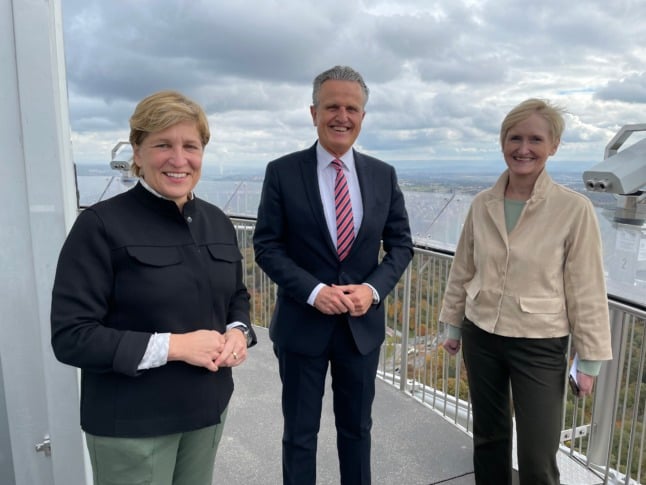The ‘Fernsehturm’ or TV tower, which can be seen from almost every part of the Baden-Württemberg capital, has been nominated by the state government for UNESCO World Heritage site status.
While the process has a way to go, with a final decision not possible before 2026, it could join 51 other world heritage sites across Germany, including Cologne’s gothic cathedral and Berlin’s ‘Museuminsel’.
The TV tower has been considered for inclusion due to innovative architectural design, and status as one of the city’s most recognisable symbols, the city said.
READ ALSO: Seven maps that explain the German state of Baden-Württemberg
A true original
Constructed between 1954 and 1956, the concrete TV tower was the first of its kind worldwide, and broadcasted both TV and radio signals for the regional public broadcaster, today known as Südwestrundfunk. Costing over 4 million Deutschmark, the project was initially heavily criticised, but was soon embraced by locals.
Standing just over 216 metres tall and located in the hilly Bopser district of the city, it is a common destination both for tourists and locals. From the viewing platform, visitors can see deep into the Black Forest and Swabian Alb regions. A restaurant, café and gift shop are also located on the decks accessible to the public.
Symbol of German (and Swabian) engineering
Stuttgart’s mayor, Frank Nopper says of the move: “I believe that this will not only have an impact on the image of the city, but also on the flow of tourists, as those interested in culture and architecture will make more and more pilgrimages to Stuttgart.”
Nicole Razavi, Baden-Wurttemberg Minister for Housing and Development said: “The first television tower of its kind in the world, it stands for great construction and design and thus also for German and – I would say – even Swabian engineering.”

A local landmark
Alongside the rearing stallion on the coat of arms, the ‘Brezel’ (pretzel) and the city’s telephone area code, ‘0711’, the silhouette of the Stuttgart TV tower has become one of the city’s most popular symbols. It features on souvenirs, clothing and the branding of several local businesses. Images of the tower also feature heavily in the city of Stuttgart’s official promotional materials.
While forced to close during the lockdowns imposed by the state government due to coronavirus pandemic, the TV tower has been reopened to visitors since July this year. This follows a closure between 2013 and 2016 for a cleaning and redevelopment project that cost €1,8 million.



 Please whitelist us to continue reading.
Please whitelist us to continue reading.
Member comments